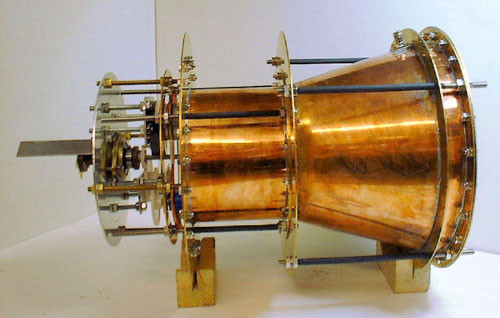EmDrive: Chinese space agency to put controversial tech onto satellites 'as soon as possible'
Chinese government confirms it has been funding EmDrive research since 2010 and believes in its benefits.
China's space agency has officially confirmed that it has been funding research into the controversial space propulsion technology EmDrive, and that it plans to add the technology to Chinese satellites imminently.
- [COMPANION PIECE] EmDrive: These are the problems China must fix to make microwave thrusters work on satellites
The China Academy of Space Technology (CAST), a subsidiary of the Chinese Aerospace Science and Technology Corporation (CASC) and the manufacturer of the Dong Fang Hong satellites, has held a press conference in Beijing explaining the importance of the EmDrive research and summarising what China is doing to move the technology forward.
According to Science and Technology Daily, the official newspaper of China's Ministry of Science and Technology, China has been carrying out "key technology research" for the last five years into the EmDrive in order to find possible "engineering applications".
Arabian Nights, or a major breakthrough?
The article, entitled "Electromagnetic drive: Arabian Nights or a major breakthrough", traces the history of the EmDrive controversy and highlights the recent publication of the Nasa Eagleworks EmDrive paper in the AIAA Journal of Propulsion and Power in November.
The article also mentions that Roger Shawyer's theories about the EmDrive were not taken seriously until Professor Yang Juan of Northwestern Polytechnical University (NWPU) in Xi'an, China began researching the topic in 2008.

"National research institutions in recent years have carried out a series of long-term, repeated tests on the EmDrive. NASA's published test results can be said to re-confirm the technology," Dr Chen Yue, head of the communication satellite division at the China Academy of Space Technology (Cast) said at the press conference.
"We have successfully developed several specifications of multiple prototype principles. The establishment of an experimental verification platform to complete the milli-level micro thrust measurement test, as well as several years of repeated experiments and investigations into corresponding interference factors, confirm that in this type of thruster, thrust exists."
China confirms it is already testing out an EmDrive in orbit
How the EmDrive works

The EmDrive is the invention of British scientist Roger Shawyer who, in 1999, proposed that – based on the theory of special relativity – electricity converted into microwaves and fired within a truncated cone-shaped closed metal cavity causes microwave particles to exert more force on the flat surface at the large end of the cone. There is less combined particle momentum at the narrow end due to a reduction in group particle velocity, so this thereby generates thrust.
His critics say that – according to the law of conservation of momentum – his theory cannot work as, in order for a thruster to gain momentum in one direction, a propellant must be expelled in the opposite direction – and the EmDrive is a closed system.
However, Shawyer says that, following fundamental physics involving the theory of special relativity, the EmDrive does in fact preserve the law of conservation of momentum and energy.
For an in-depth explanation, see What is the EmDrive and why should I care?
Chen confirmed that Cast has developed a test device of the EmDrive and that tests to verify that the device can actually fly are already being carried out in low-Earth orbit. This ties in with information sources in the international space industry gave IBTimes UK under condition of anonymity that China already has an EmDrive on its orbital space laboratory Tiangong-2.
The press conference also featured a presentation by Li Feng, the chief designer of Cast's communication satellite division, who gave a detailed explanation of the various engineering problems affecting the EmDrive that need to be solved in order to make the technology viable for space applications.
Li explained that Cast's prototype of the EmDrive currently only generates mere millinewtons of thrust, and they will need to get these levels up to between 100 millinewtons to 1 newton in order to get orbit and attitude control – to prevent satellite from tumbling in orbit – to work if the thruster is placed on a satellite.
To do this, the cavity design will need to be improved, in order to reduce electrical loss from the material that the cavity is made of. There are also other problems relating to where exactly the microwave thruster is placed on the satellite, because its positioning can affect the temperature of the thruster cavity and thus how much thrust is produced.
Li said Cast was taking its expertise in designing satellites to make sure the EmDrive worked properly, the way other microwave equipment built for satellites does. To that end, the communication satellite division is currently researching how to improve the structure of the satellite; how to control temperatures on the satellite and even how power is distributed and converted into microwave input energy.
"This technology is currently in the latter stages of the proof-of-principle phase, with the goal of making the technology available in satellite engineering as quickly as possible," said Li Feng. "Although it is difficult to do this, we have the confidence that we will succeed."
© Copyright IBTimes 2025. All rights reserved.






















